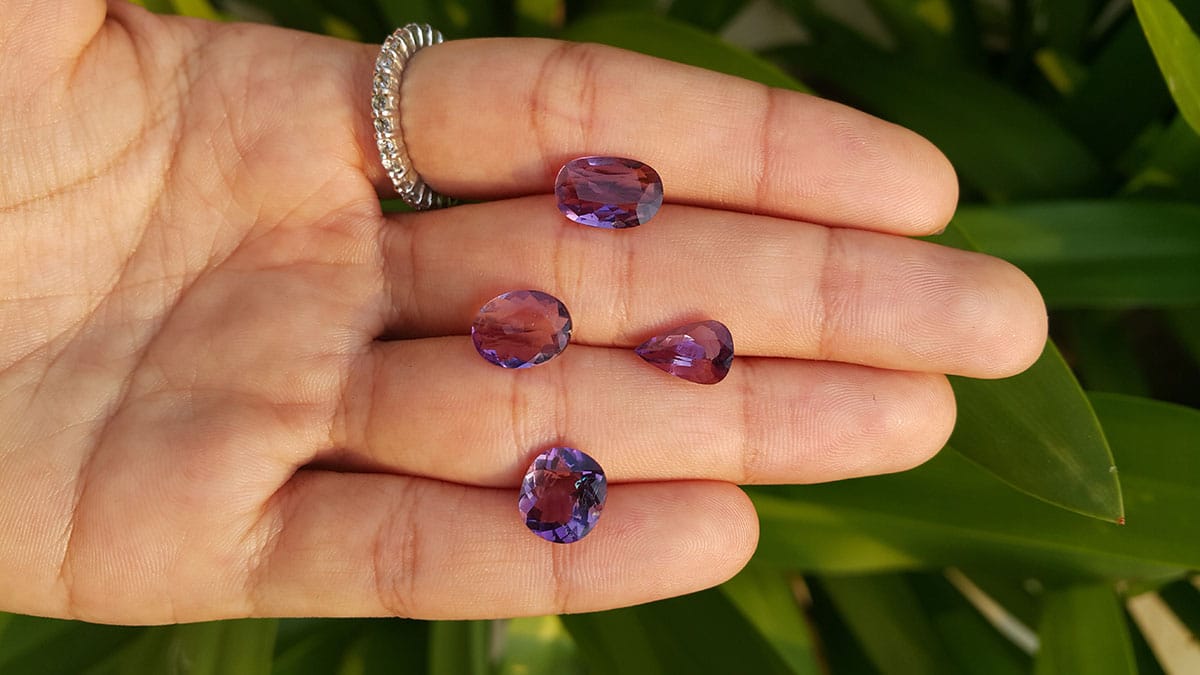Purple scapolite

Buy natural scapolite in our shop
Purple scapolite is a rock-forming silicate minerals composed of aluminium, calcium, and sodium silicate with chlorine, also carbonate and sulfate. The two endmembers are meionite (Ca4Al6Si6O24CO3) and also marialite (Na4Al3Si9O24Cl). Silvialite (Ca,Na)4Al6Si6O24(SO4,CO3) is also a recognized member of the group.
Purple scapolite properties
The group is an isomorphous mixture of the meionite and also marialite endmembers. The tetragonal crystals are hemihedral with parallel faces, like scheelite. And at times of considerable size. They are distinct and usually have the form of square columns.
Furthermore, some cleavages parallel to the prism-faces. Crystals are usually white or also greyish-white and opaque. We found meionite as colorless glassy crystals in the limestone blocks of Monte Somma, Vesuvius. The hardness is 5 – 6. Also the specific gravity varies with the chemical composition between 2.7 (meionite) and 2.5 (marialite).
The stones are especially liable to alteration by weathering processes. With the development of mica, also kaolin, etc. Because of the usual opacity of the crystals. Owing to this alteration. and also to the variations in composition. Numerous varieties have been distinguished by special names.
The gem is commonly a mineral of metamorphic origin. It occurs usually in crystalline marbles. But also with pyroxene in schists and gneisses. The long slender prisms abundant in the crystalline marbles. Furthermore, schists in the Pyrenees are known as dipyre or also couzeranite.
Large crystals of common scapolite (wernerite) are found in the apatite deposits. In the neighborhood of Bamble near Brevik in Norway. It finally results from the alteration of the plagioclase of a gabbro.
Four groups
According to their genesis the scapolite rocks fall naturally into four groups:
– Limestones and contact metamorphic rocks
– Mafic igneous rocks
– Scapolite-hornblende rocks
– Metamorphic rocks of gneissose character
Crystal Structure: Tetragonal, columnar
Hardness: 5.5 – 6 on the Mohs scale
Refractive Index: 1.540 – 1.579
Density: 2.57 – 2.74
Cleavage: Good
Transparency: Transparent, translucent
Double Refraction or Birefringence: -0.006 to -0.037
Luster: Vitreous
Fluorescence: Pink: orange, pink, Yellow: violet, blue-red
Purple Scapolite, from Afghanistan
Natural scapolite for sale in our gem shop
We make custom made scapolite jewelry as engagement rings, necklaces, stud earrings, bracelets, pendants… Please contact us for a quote.
